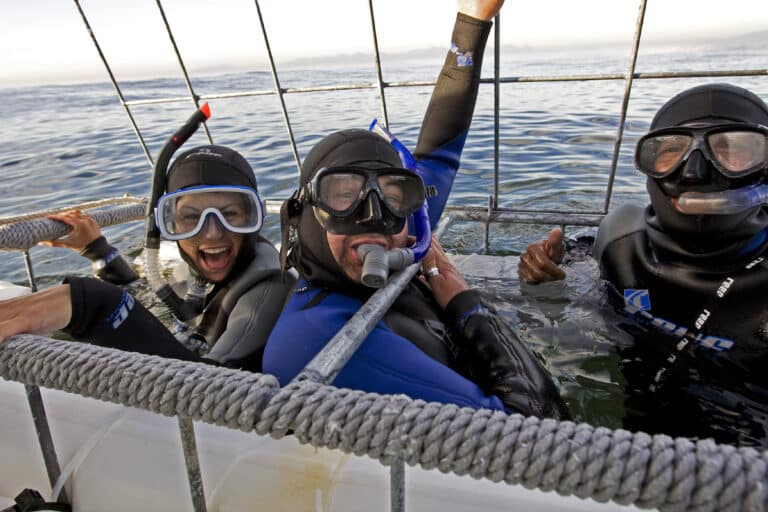By Courtney Cooper
Agonistic Behaviour in Sharks
Based on research findings, about 23 shark species have the ability to display agonistic behaviour. These species include, the Grey Reef Shark, Bonnethead, Scalloped Hammer Head, Black Tip Shark, Galapagos Shark and the White Shark. Agonistic behaviour occurs when the sharks feel threatened, as they attempt to avoid fighting the threat. Typical characteristics include 4 postural elements; elevated snout, depression of the pectoral fin, arching of the back and rapidly moving from side to side to show total size, also called lateral flexing. In this article, we provide a detailed guide to understanding the agonistic behaviour in sharks.
The below image shows the displays of a grey reef shark, who exaggeratedly displays the agonistic behaviours. You can see non display in illustration (a). In (b), you can see a mild display with the snout slightly raised (SR) and the back arched (BA). In (c) the illustration depicts a strong display, the snout is elevated, and the back is fully arched. The feeding posture is shown in (d).
Guide to Agonistic Behaviours in Sharks

In addition to the above typical displays, shark species can also exhibit body shivering, charging, jaw widening, tail depression and shaking of the head. The White Shark is known to display, tail slapping, breaching and repetitive aerial gaping.
Triggers of agonistic behaviour include, natural competition, hunger and being pursued without warning.
The below image shows the more common aggressive and non-aggressive behaviours:

Competing for territory, prey and mating partners are the shark’s natural instincts. These agonistic displays are part of the shark’s evolution to avoid an attack that does not involve hunting for food. Evolving and adapting is key to survival. Sharks need to keep fit and be able to reproduce, therefore avoiding unnecessary injuries is imperative to their survival. The ultimate goal of these displays is to warn off the threat, instead of fleeing or attacking. When a shark appears larger than it actually is, they may no longer need to prove their dominance further. The risk of displaying these behaviours, is that the shark has to reduce their speed, use their energy to display the behaviour and run the risk of potentially being attacked.
Overall, the benefits of using agonistic displays can far outweigh the risks of not using these displays as the sharks stands to benefit from territory, mating, food and tactical combat experience. As these sharks continue to evolve, so do their behaviours.
References:
Alcock J. 1993. Animal behaviour: An evolutionary approach. 5th ed. Sunderland, MA: Sinauer.
Barlow GW. 1974. Derivation of threat display in the gray reef shark. Mar. Behav. Physiol. 3:71–81
R. Aidan Martin (2007) A review of shark agonistic displays: comparison of display features and implications for shark–human interactions, Marine and Freshwater Behaviour and Physiology, 40:1, 3-34, DOI: 10.1080/10236240601154872
Wikipedia contributors. (2023, February 9). Shark agonistic display. In Wikipedia, The Free Encyclopedia. Retrieved from Wikipedia.
Apex Predators provides the best kelp forest diving cape town and shark cage diving in Cape Town. If you enjoyed this article, you may also be interested in our other article, where we discuss the rarest shark species.




